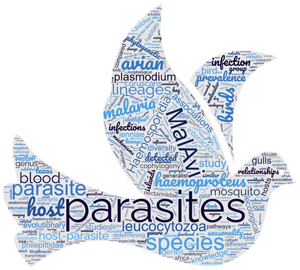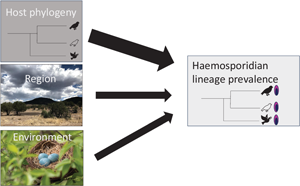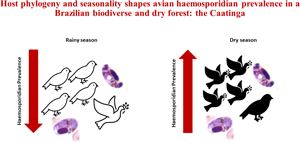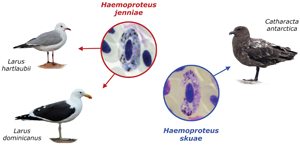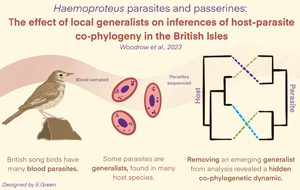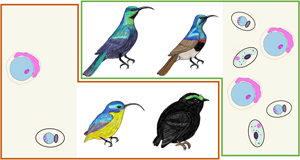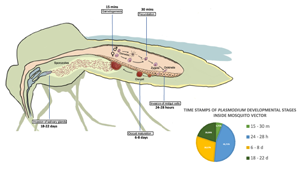The nectarivorous common sunbird asity (Neodrepanis coruscans) is phylogenetically closely related to the frugivorous velvet asity (Philepitta castanea), yet it shares similar habitat and foraging behaviour as the Malagasy sunbirds (Cinnyris spp.). As ecological factors have been shown to influence blood parasite prevalence, it should be tested whether parasite abundance, prevalence and diversity of N. coruscans are more similar to the sunbirds than to its relative. Therefore, blood samples (n = 156) and smears (n = 60) were tested for different blood parasites (Haemosporida, trypanosomes, filarioid nematodes) using molecular and microscopic methods. High prevalence of haemosporidian parasites was observed in all bird taxa, with rates ranging from 23% in N. coruscans to 84.6% in C. notatus. The Malagasy Cinnyris spp. exhibited a high occurrence of mixed haemosporidian infections (>76%) with various specialized lineages. Within the Philepittidae family, no Haemoproteus infection was detected and just a few cases of mixed infections. Nectariniidae species predominantly had specialized haemosporidian lineages, while Philepittidae had infections mainly caused by generalist lineages. These findings emphasize the diverse range of blood parasites in Nectariniidae, while additionally highlighting the high diversity of trypanosomes and filarioid nematodes in Philepittidae. Additionally, several newly discovered haemosporidian lineages, Trypanosoma isolates and filarioid nematode isolates were identified. Notably, Philepittidae exhibited a lower prevalence of avian haemosporidian parasites compared to Nectariniidae, possibly due to potential resistance mechanisms. Despite N. coruscans sharing similar habitat and behavioural ecology with both Cinnyris spp., it closely resembles its relative, P. castanea, in all aspects of haemosporidian parasitism.


